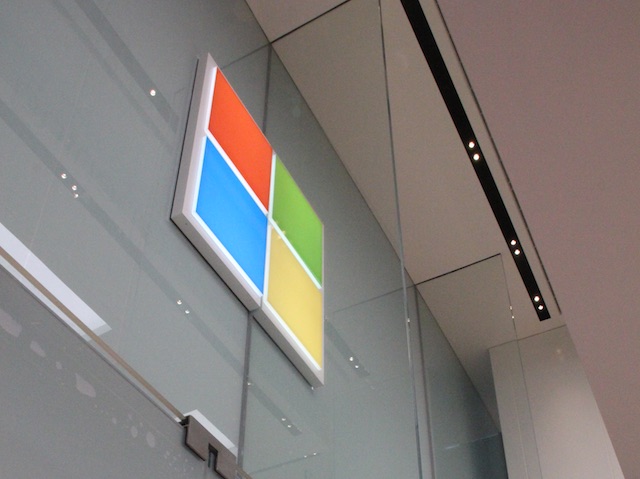Microsoft today opens the doors to its first flagship store outside of North America in Sydney, Australia. A look inside the project gives some insight into the company’s retail strategy.
Situated in Westfield’s Pitt Street Mall, the store promises “cutting-edge retail and experiential spaces that allow consumers to get hands on with products in an immersive way.” What’s immediately notable is the lack of obvious security with all the devices on display being available for customers to pick up and walk around the shop with.
Most of those devices showcase Microsoft’s various projects and alliances. Everything from XBoxes running Minecraft to Lumia phones are on display along with a range of laptops from partners such as Dell, Toshiba and Lenovo.

Notable among the devices is are the Surface Book and Surface Pro 4 along with the Microsoft Band 2 taking place of pride in the displays. As with everything else, customers can slip the wriststaps on and walk around with them. Microsoft’s representatives were coy on how they will prevent the less honest walking out the store with them.

Acting as a store greeter, the Answer Desk is the hub of store where representatives direct traffic whether it’s technical support – which like the Apple Genius Bar is provided free – sales, or directions to events in the upstairs community theatre.

Community is a big theme in the store and the company announced $4.8 million in software and technology grants to 11 not-for-profit Australian organisations to coincide with the shop’s opening.
That emphasis on ‘community’ is reflected in this quote from the company’s press release;
“Our new flagship store is here to showcase the very best of Microsoft to the local community and we are delighted Sydney has been chosen as its home,” said Pip Marlow, managing director, Microsoft Australia. “This is a key part of our commitment to delivering a truly interactive retail experience that gives customers, partners and community organisations the opportunity to see, experience and do great things, all made possible by Microsoft technology.”
Pip Marlow sees the upstairs community room as being an opportunity to engage with various school, business and technology groups. The space itself is a little cramped, however it can be isolated from the store’s general hubbub, unlike the Apple Store’s equivalent space.

Overall the store is modernistic but somewhat cramped and should the store be successful congestion is going to be a real problem, particularly around the Answer Desk and the narrow stairwell which, like its Apple competitor two blocks away, features a translucent stairwell.

In comparison to both the nearby Apple and Telstra stores, the Microsoft Showcase is surprisingly low tech with its retail experience. While the assistants will have mobile Point Of Sale terminals there’s little in the way of location technologies and contactless payments.

Overall the Microsoft Store comes across as a touch crowded and, dare one say, a little old school retail. As a showcase for the company’s products, it’s probably no more impressive than those of the better retailers.
However if Pip Marlow’s aim of building a community around Microsoft’s products is successful, that could prove to be the long term winning strategy for the company.

Leave a Reply